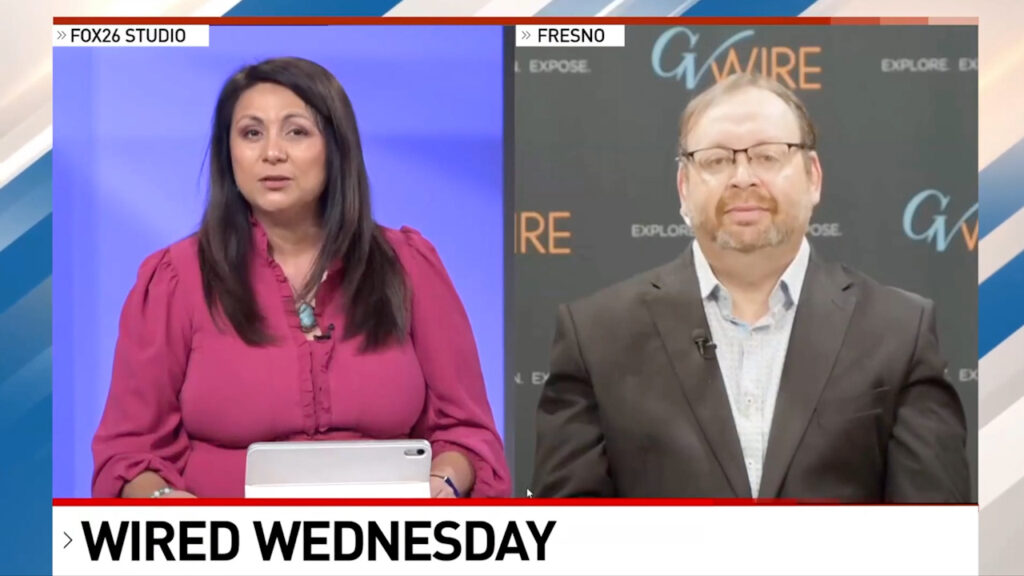Share
Over the last three decades, Californians have swung from “tough on crime” conservatism to a more lenient, less punitive approach to criminal justice. Based on the results of this year’s election, it doesn’t look like the pendulum is swinging back anytime soon.
Already the state had gradually eased up on sentencing standards, made it easier for inmates to qualify for parole, and reduced its prison population. These changes in the last few years have been made inside the Capitol, in court houses and at the ballot box, and were a dramatic departure from the crackdown era that was characterized by laws with unflinching slogans such as “three strikes and you’re out.”
This year, voters were given the opportunity to start swinging back toward stricter penalties — and opted not to.
Proposition 20 would have given prosecutors new powers to charge certain non-violent crimes as felonies and made it harder for long-time inmates to qualify for early-release consideration. As of late this afternoon, the measure is down by 24 points with the vote count continuing, and the Associated Press has projected its defeat.
That’s proof, Prop. 20 opponents say, that Californians are still committed to a more progressive vision of criminal justice. Chief among them: former Gov. Jerry Brown, who spent his most recent stint as governor pushing for that vision and who spent millions to defeat the measure.
“In voting down Prop. 20, California voters signaled once again that they believe most human beings can turn their lives around if given the chance,” Brown said in a statement released on election night.
Voters also backed Proposition 17, a measure to give Californians on parole the right to vote.
It Was Thanks to Many of Those Activists That Gascon Entered the Race
And in Los Angeles, the state’s largest county, voters were opting to replace current District Attorney Jackie Lacey with former San Francisco prosecutor George Gascon. In a race widely seen as a referendum on a more progressive, less police-friendly prosecutorial style informed by the Black Lives Matter movement, the progressive won. Gascon joins a growing stable of like-minded district attorneys — San Francisco’s Chesa Boudin, Contra Costa County’s Diana Becton and San Joaquin County’s Tori Verber Salazar.
The first Black district attorney in Los Angeles and the first woman, Lacey has played the role of police-aligned moderate in this year’s campaign. “Moderate” is a relative term in Los Angeles County. But Lacey was the favorite in Los Angeles’ whiter, more affluent, more suburban areas. With endorsements from every major law enforcement union in the county and the state, she also incurred the displeasure of anti-police-violence activists who criticized her for never having prosecuted any law enforcement officer who shot an unarmed civilian since she was elected in 2012.
It was thanks to many of those activists that Gascon entered the race. With a full-fledged media campaign including a freeway adjacent billboard in San Francisco, they actively recruited him to run against Lacey. Despite his professional history as a cop, Gascon built a national reputation as a reform-minded prosecutor, helping to write a state ballot measure in 2014 that knocked many non-violent felonies down to misdemeanors. Lacey opposed that.
Gascon entered the race with high-profile progressive endorsers: Bernie Sanders, Kamala Harris, Elizabeth Warren. But after the killing of George Floyd, with Democratic leaders scrambling to signal their openness to progressive bonafides on the issue of policing, Gascon also picked up the endorsement of Los Angeles mayor Eric Garcetti.
That political momentum also seems to have propelled Measure J to a likely victory. A budget measure that would divert 10% of the county’s discretionary funds to social services, jail diversion programs and affordable housing — and explicitly away from law enforcement — also became a pitched battle between law enforcement unions and progressive activists. Here too, the activists are ahead.
And in the Bay Area, San Francisco passed a measure to allow city officials to reduce the size of the police force, and both San Jose and Berkeley approved new police oversight boards.
Those Progressive Opponents Are Chalking up Prop. 25’s Demise as Yet Another Win
The failure of Proposition 25 is harder to interpret. The measure would have abolished cash bail and was fiercely opposed by the bail bond industry. But the industry was joined by unlikely allies: civil libertarian activities who — wary of replacing cash bail with an algorithm — warned of a “robopocolypse” should the proposition pass.
Those progressive opponents are chalking up Prop. 25’s demise as yet another win for the “criminal justice reform” movement.
“I think Californians are weary of increased detention, of the government exercising its power in an unfettered way, of the computerization of the justice system,” said Phil Telfeyan, executive director of Equal Justice Under Law. His group has challenged the state’s cash bail system as unconstitutional, yet also opposed Prop. 25.
He also points to some of the ads run by the bail industry-funded “No on 25” campaign as evidence of a changed electorate. Ads emphasizing racial bias and the unfairness of keeping people behind bars before trial these were not the race-baiting, fear-inducing anti-crime political ads of old, Telfeyan noted.
“I think one of the factors that contributed to that is the concern of replacing bail with risk assessment tools that are relying on data, including criminal history could lead to increases in racial disparity,” said Magnus Lofstrom, criminal justice policy director and senior fellow for the Public Policy Institute of California. “And that is a real concern to many Californians.”
That more lenient attitude on crime is a stark reversal from the California of three or four decades ago.
In 1986, an overwhelming majority of California voters opted to recall three state Supreme Court justices, largely over their opposition to the death penalty.
The next decade, Sen. Dianne Feinstein — who had made her support of the death penalty her calling card in an earlier unsuccessful race for governor — won her first bid for U.S. Senate. And in 1994, 72% of voters passed the state’s landmark “three strikes” sentencing initiative — a “habitual offender” law that effectively required judges to sentence three-time felons 25 years to life in prison. The proposition served as a national policy template for other states to replicate. It also swelled the number of inmates serving long sentences in the state’s prison by tens of thousands.
Public opinion began to swing in the other direction in 2011, when the U.S. Supreme Court demanded that the state reduce its overcrowded prisons. Under former Gov. Brown, the state introduced new policies to shift the responsibility for nearly 30,000 offenders from state prisons to county jails.
Supporters of Prop. 20 Attributed Their Loss to Voters Not Knowing Enough About the Proposition
That coincided with a shift in voter opinion. In 2014, 60% of the state’s voters weakened the three-strikes law, reclassifying some felony property crimes as misdemeanors via Proposition 47. Two years later, 64% of the electorate opted to expand parole opportunities for some offenders with Proposition 57.
Those are the two California laws that Prop. 20 would have partially reversed.
Supporters of Prop. 20 attributed their loss to voters not knowing enough about the proposition.
“California voters are nuanced,” Richard Temple, political consultant for the Yes on Proposition 20 campaign. “There are still problems with Prop. 57 and Prop. 47 that should be reformed, that the public supports. In the campaign for Prop. 20, we just failed to communicate to voters what Prop. 20 was all about. They did not understand it.”
It’s also worth noting that Prop. 20’s proponents began gathering signatures to place it on the ballot in 2017. Since then the political winds have only blown harder against them. The police killing of Stephon Clark and George Floyd have propelled even politically moderate politicians in the state to at least pay lip service to the Black Lives Matter movement. The Legislature has placed new restrictions on when police can legally use force and introduced new law enforcement transparency rules.
And in yet another sign that the times have changed, the state prison guard’s union, once one of the most feared interest groups in the state, spent millions to unseat the Assembly Public Safety Committee’s progressive chair. As of Wednesday evening, Assemblymember Reggie Jones-Sawyer is leading his opponent, fellow Democrat Efren Martinez, by more than 17 points.
“It’s validation that California voters stand by their decision to end mass incarceration in California,” said Jay Jordan, executive director for California for Safety and Justice, which led efforts against Proposition 20. “This is not a wedge issue anymore.”
By Byrhonda Lyons and Ben Christopher
RELATED TOPICS:
Categories

Gaza Death Toll Tops 70,000, Health Ministry Says


















